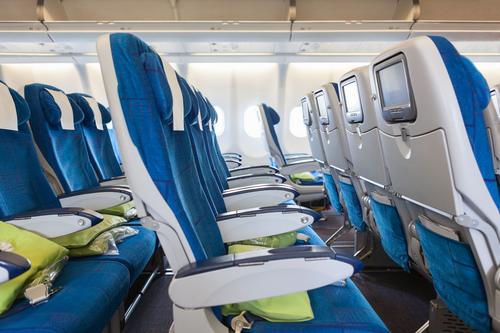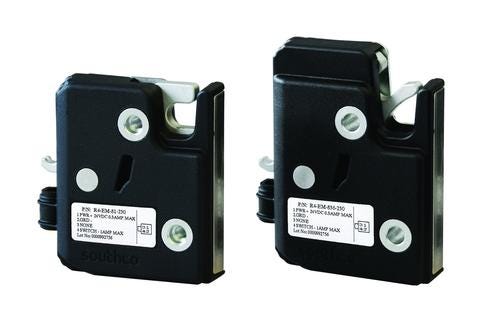January 30, 2015

In response to fuel costs, major aircraft carriers are concentrating on redesigning their fleets by reducing weight to optimize fuel consumption and the passenger experience. Lightweight composites and engineered alloys are being integrated into every aspect of aircraft design, from exterior structural elements to the interior cabin modules and seating. The lightweighting trend will continue to impact every aspect of aircraft design, manufacturing, maintenance and passenger comfort within the aircraft interior.
With lightweighting rapidly accelerating, aircraft OEMs are continually examining new ways to provide a high-value experience while lowering manufacturing costs. For design engineers, this means sourcing components that not only meet end-user expectations for quality and usability but can be standardized for use across a variety of applications, throughout the aircraft cabin, such as seating, access paneling, storage equipment and galleys.

Benefits of Standardized Mechanisms
When designing aircraft interior applications, the selection of proven latching and hinging solutions can save both time and engineering costs from the start. Through the integration of these previously validated solutions, product development teams have a greater level of confidence at the beginning of the design process and their focus can be redirected to more critical areas. This results in a more cost-effective new product development process because it reduces the possibility of multiple design iterations, which can result in excess design, analysis and product validation costs.
Aerospace OEMs are seeing value in investing in higher production tooling for lower overall program costs. For instance, with plastic molded and die cast components, the cost to manufacture is significantly lower after the initial tooling investment is made, which is counter to CNC machining components for each individual application. Not only are injection molded and cast products manufactured in a much faster process, but with proper mold flow analysis and tool coring, significantly lighter and stronger products can be achieved.
Designing in a standardized mechanism not only results in cost and time savings, it allows OEMs to tool up one solution and use it across multiple aircraft platforms and significantly reduce the product validation process. Another area of flexibility is the ability to change product styling by just modifying the A-surface of the product. This provides the engineer with the confidence of a proven mechanism while also satisfying the styling requirements with a look that matches the aircraft.

Using standardized mechanisms also enables the design engineer to maximize functionality in the areas of the aircraft that the passenger interacts with, such as seating and interior cabin applications. Proven mechanisms ensure reliability of operation, which can ultimately influence a passenger's perception of airline quality. For example, a poorly designed mechanism that rattles or squeaks during operation can only add to a passenger's anxiety regarding the mechanical reliability of the aircraft. High-quality and reliable mechanisms, on the other hand, can greatly increase the passenger's overall flight experience.
Enhanced Ergonomics and User-friendly Features
Aside from these benefits, integrating lightweight mechanisms into certain functional aspects of aircraft interior design could still have a negative effect on the passenger experience. In some cases, replacing materials with their lightweight counterparts may actually cause the passenger to associate the lighter weight with lower quality. However, adding standardized torque hinging solutions into these applications helps create a quality experience for the passenger through enhanced control of motion and vibration dampening.
For instance, position control hinges designed with pre-engineered friction technology provide continuous resistance against motion and can make a lightweight plastic table or tray feel heavier and more substantial for the end user. This type of positioning technology also provides the flexibility to have the proper torque designed for the specific weight and function of the application, and is available in both symmetric and asymmetric versions.
Torque hinges can also be incorporated into new inflight entertainment (IFE) systems that are designed to accommodate personal electronic devices, versus traditional systems that are integrated directly into the seats. Aerospace OEMs are choosing to design next-generation IFE mounts into armrests or on the backs of seating that can be easily folded out and stowed when not in use. Pre-validated constant torque hinges are ideal for these applications because they provide reliable positioning of a passenger's tablet or smartphone and prevent drift caused by fingertip use or vibration during flight.
Improved Inflight Safety and Security
In this age of heightened security measures, standardized mechanisms can also be used to solve safety and security challenges within the aircraft interior. Electronically actuated push-to-close latches, in particular, offer a simple, versatile solution that can be applied across the cabin to achieve remote access and security. The latch mechanism is concealed when installed within any door or panel in the cabin, allowing a clean exterior surface that does not disrupt aesthetic design.
In addition to the reliable, secure latching and remote access control capabilities that electronic access solutions provide, they also offer space and power reduction capabilities that can help to reduce the overall operational footprint of an aircraft. Electronic access solutions that require significantly lower power to operate means that less power generation and lighter systems are required. Less power needed per electronic latch point allows more available generated power for new devices, opening up areas for increased "feature density" within the aircraft interior. As a result, the carrier is able to provide a better experience by having more room to add passenger-friendly features.
Conclusion
As the lightweighting trend continues to be a driving factor in aircraft design, aerospace OEMs must explore innovative ways of meeting production demands while ensuring reliable operation of interior touch points. Versatile, proven engineered solutions that are designed to meet the needs of the aerospace industry provide engineers with standardized solutions for conserving weight across interior applications, ultimately contributing to the overall reduction of operation and fuel costs in large-scale aircraft design. Integrating validated, standardized mechanisms in these applications allows design flexibility at a much lower cost over time, improves industrial design and ultimately enhances end-user functionality.
Design engineers and professionals, the West Coast's most important design, innovation, and manufacturing event, Pacific Design & Manufacturing, is taking place in Anaheim, Feb. 10-12, 2015. A Design News event, Pacific Design & Manufacturing is your chance to meet qualified suppliers, get hands-on access to the latest technologies, be informed from a world-class conference program, and expand your network. (You might even meet a Design News editor.) Learn more about Pacific Design & Manufacturing here.
As Business Development Manager for Southco's Transportation Strategic Business Unit, Bob Straka oversees innovative, customer-driven engineering solutions for the global transportation industry. Straka has worked at Southco for 14-plus years in various levels of the engineering process, from product design to production. He holds a bachelor's degree in mechanical engineering from Temple University and a master's degree in business and administration from Penn State University.
About the Author(s)
You May Also Like





